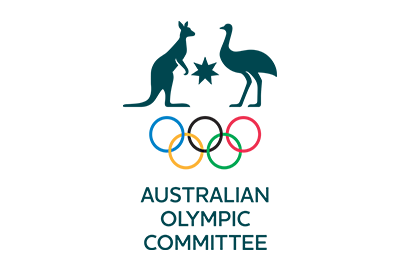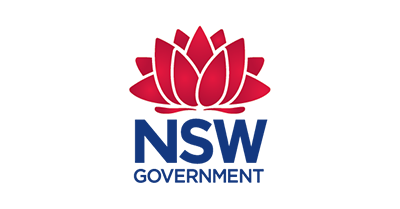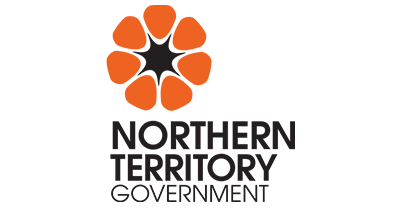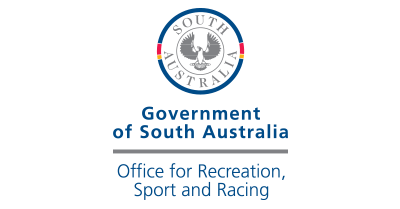Cost (direct financial and time)
Although there are many factors that influence sports participation, ‘cost’ is consistently identified.
Although there are many factors that influence sports participation, ‘cost’ is consistently identified. 19, 40, 44, 53, 96, 97, 98, 99, 100, 101, 102, 103
Costs not only include expenses such as uniforms/equipment and registration and game fees, but also, transportation, social, and/or time costs. Voluntary service within the sports club system, particularly for parents, can also be viewed as a social or time cost, over-and-above the monetary outlay for club membership, travel, training, and competitions. 9, 12, 13, 26, 43, 97, 102, 103, 104
More information on the various ‘costs’ of sport, as well as the way in which cost can impact different groups within the population is available in the Factors influencing sport participation topic.
AusPlay
There is limited detailed data available on the direct financial costs of sport participation, especially how costs vary between different sports/activities or geographical location (e.g. states, territories, regional, metropolitan, etc.). 96, 98, 105
The Australian Sports Commission's AusPlay survey collects information on the amounts individuals (15 years and over) and parents (of children aged under 15 years) report paying for themselves or their children to participate in sport and physical activities.
In 2024: 106, 107
- 51% of Australians aged 15-17 years, and 61% of those aged 18-24 years, paid to participate in sport or physical activity. The average (mean) cost per year was around $1000.
- For those aged 15-24, sport-related participation at least once per week increased in frequency based on annual household income, with households earning less than $40,000 per annum having the lowest participation rates (34%) and households earning $200,000+ having the highest (47%) at least once per week.
- For children (aged 14 years and under), sport-related participation also increased in frequency based on annual household income. With 48% of those with $200,000 in annual household income participating at least once per week, compared to 23% of households with less than $40,000 per annum.
Socio-economic factors
In general, research from Australia and internationally shows that children and youth from lower socio-economic families or those experiencing financial hardship are less likely to participate in sport, especially organised sport. This includes playing, volunteering, and spectating. 1, 39, 42, 96, 103, 108, 109, 110, 111, 112
- In the ‘2023 Mission Australia Youth Survey’, 53% of respondents who reported financial hardships were sports participants (compared to 67% who did not report financial hardship) and 41% were sport spectators (compared to 50% of those who did not report financial hardship). Those who were very or extremely concerned about financial security were less likely to participate in sport as a participant (56% compared to 66% who were not at all or somewhat concerned about financial security) or as a spectator (42% compared to 49% of those who were not at all or somewhat concerned). 39
- Children and young people from less affluent families may also have less opportunities to develop their physical and sport-related skills. This can lead them to be less physically literate, and therefore less able or willing to participate throughout their lives. 42, 97, 112
- A 2021 study of sport participation among lower income households in the Australian Capital Territory also identified additional barriers. Lack of disposable income, being reliant on public transport, needing to prioritise family needs, fear of injury/the impact of injury, being unable to afford good quality equipment or to pay fees upfront, and being unaware of how to engage in sport or active recreation. The authors conclude that simply making existing activities cheaper may not have a significant impact on this population. They suggest that new ways of engaging with low-income households – supporting and enabling them to be active and to understand the benefits of activities – are required. 97
Voucher programs, scholarships, and other fee support (e.g. reducing registration fees in exchange for volunteering), providing access to good quality second hand uniforms and equipment, increasing communication about accessible programs, improving transportation options and/or costs, and providing more flexible payment and scheduling options can all help to lower the ‘cost’ barriers of sport. This in turn can enable more children and young people to gain the benefits of lifelong sport and active recreation participation. 19, 39, 40, 42, 53, 97, 101, 110, 111, 113, 114, 115, 116, 117, 118, 119, 120
Resources and reading
- Research reveals a third of Aussie kids planning to drop out of sport, opens in a new tab, Allianz, (4 July 2024). As the nation prepares to support our athletes at the upcoming Olympic and Paralympic Games in Paris 2024, new research from Allianz Australia reveals that 30% of young Australians have asked their parents if they can stop playing sport by age 15. The time and increasing financial commitment, alongside competitiveness and lost interest are listed as the top reasons and barriers behind the decline in participation.
- No cash, no play? Have cost-of-living pressures impacted sports participation in Australia?, opens in a new tab Vaughan Cruickshank, Brendon Hyndman, Tom Hartley, The Conversation, (10 April 2024). Many Australians have in recent years been impacted by the cost-of-living crisis, but what about sport participation? While many Australians, and their children, enjoy participating in sports, it can be a costly passion, hitting the hip pocket with costs such as equipment, registration, coaching and accident insurance.
- Cost-of-living pressures impacting sports clubs, families around Australia, opens in a new tab, Aaron Kelly, ABC Capricornia, (16 February 2024). With the cost-of-living crisis placing a strain on families, community sporting clubs are on the brink of collapse, a leading sports organisation has revealed. Australian Sports Foundation chief executive officer Patrick Walker says challenging economic conditions are "a massive issue".
- How rising cost of living is impacting sport and physical activity, opens in a new tab, Sport England, (11 January 2024). We’ve published a new report that examines how the rising cost of living is impacting the sport and physical activity sector that is intended to help activity providers understand the impact cost of living is having on their participants. Rising living costs in England have been caused by various factors such as the coronavirus (Covid-19) pandemic, the war in Ukraine, supply chain problems and higher interest rates, as well as inflation and low wage growth. The report found:
- The increased cost of living has led to people changing their behaviours in relation to activity, and these changes are unlikely to be reversed until household finances improve.
- People from the most deprived areas and from lower socioeconomic backgrounds are more likely to say their levels of physical activity have been negatively affected by cost-of-living increases.
- Club activities are nearing pre-Covid levels, but cost pressures, especially from rising energy prices, affect club finances which in turn, is making access less affordable for some.
- Some facility providers are reporting concerns regarding increases in utility costs and are responding by reducing sessions and increasing fees.
- Cost of living pressures are also having an impact on the sport and physical activity workforce: Some people are volunteering less due to time constrains, meaning that other people are volunteering more due to demand. Paid staff, especially those with low wages or in casual positions, are leaving for better opportunities elsewhere, while some employers are considering redundancies and closures due to budget constraints.
- The cost of sport is a big issue for families. What is Australia doing about it?, opens in a new tab Gemma Breen, ABC, (11 June 2023). For Sarah McGovern, keeping her kids in sport is crucial, but also overwhelming. "This year's soccer registration was two weeks earlier than usual. We were going to pay the rates, but I put them off and thought, they can just be late," she says.
- The intersectional cost of youth sport participation, opens in a new tab, Bryan Heal, Marika Warner, Quazance Boissoneau and Kendra Kerr, SIRC, (1 March 2023). MLSE Foundation’s 2022 Change the Game Research Project (published in Fall 2022) explored youth sport access, engagement and equity throughout Ontario to provide actionable data insights for sport funders, providers and researchers. Over 8000 youth and parents of youth aged 6-29 indicated their obstructions to sport engagement. Cost of programs and equipment was identified as a barrier by 43%. Predictably, both household income and (dis)ability represented the strongest demographic relationship to the ability to afford access to sport programs, with more than half of youth from the lowest income bracket reporting cost as a reason why they do not play sports. Suggests 5 approaches sport funders and policymakers can take to support equitable access in the communities they support or are intending to reach in their return to play investments: Prioritize community-led organizations; Prioritize safer spaces; Provide unrestricted grants; Give multi-year funding; Focus on reciprocity and consider non-monetary contributions.
- National Sport Participation Strategy: Survey snapshot, Australian Sports Commission, (2023). In 2023 more than 6,600 Australians responded to a survey to help identify motivators and barriers to participating in sport. 45% of respondents agreed that sport was 'too expensive to play/buy gear', the largest percentage recorded for any barrier.
- Strategies to Reduce Financial Barriers to Inclusion and Participation, opens in a new tab, Football Australia, (2023). The financial barrier to participation in sport is generally a tough one to overcome as a club, but with creative thinking and support from diverse partnerships, there multiple ways to breakdown that barrier. This factsheet will highlight ideas you can implement to your club, such as: Promote Government Funded Sports Vouchers; Pricing Strategies; Payment Plans; Second-hand Equipment Market; Lowering Registration Fees for Volunteers; Subsidising Fees.
- Richer schools’ students run faster: how the inequality in sport flows through to health, opens in a new tab, Vaughan Cruickshank, Jeffrey Thomas, Kira Patterson, The Conversation, (11 July 2022). We like to believe sport is the great leveller and privilege doesn’t matter once you enter the arena or sports field. Yet our study indicates this isn’t true. Educational advantage carries over into sporting participation and success. This finding matters for reasons other than sport. Sport promotes physical activity, and the gaps in participation and success go some way towards explaining disparities in the health of students from advantaged and disadvantaged backgrounds. Our findings suggest better funding and resourcing for government schools, particularly those in areas of low-socioeconomic status (SES), could make a substantial difference to supporting healthy active lifestyles for all Australian students.
- How Kids’ Sports Became a $15 Billion Industry, opens in a new tab, Sean Gregory, Time, (24 August 2017). Across the nation, kids of all skill levels, in virtually every team sport, are getting swept up by a youth-sports economy that increasingly resembles the pros at increasingly early ages. At the high end, families can spend more than 10% of their income on registration fees, travel, camps and equipment.
- Which junior winter sport is the most affordable for you? See our fees guide for the upcoming season, opens in a new tab[paywall], Brayden Heslehurst, Quest Newspapers/Courier Mail, (23 February 2017). Compares the average upfront registration costs of several popular sports in the Brisbane area including: Australian rules football; rugby league; netball; rugby union; hockey; and football (soccer). Costs range from AU$195 to AU$415.
- The troubling price of playing youth sports, opens in a new tab, Mark Hyman, The Conversation, (3 June 2015). The escalating costs [of youth sport] are a growing concern on sidelines and in bleachers across this country. Ultimately, the price of play threatens something fundamental about sports for our kids: the expectation of a level playing field and an egalitarian spirit.
- Has kids sport become too expensive, opens in a new tab [audio; 51 mins], ABC Radio Melbourne, (7 March 2024). From registration fees, uniforms, to petrol, when we look at the cost of living crisis, is sport the first thing to go? The implications of kids not being able to afford to play sport are wide spread and can have a broader impact on the community. In this edition of The Conversation Hour the team talk how we make children's sport affordable.
- Active Lives Children and Young People Survey: Academic year 2023-24, opens in a new tab, Sport England, (December 2024). This report presents data from the Active Lives Children and Young People Survey for the academic year 2023-24. Data is presented for children and young people in school Years 1-11 (ages 5-16) in England.
- Children and young people from the least affluent families are the least likely to be active, with only 45% meeting the Chief Medical Officers’ guidelines - compared to 57% of those from the most affluent families. Children and young people from the least affluent families are also under-represented as volunteers.
- Children and young people who report three or more positive attitudes (have a meaningful relationship with activity and/or are physically literate), 62% are active, compared to just 34% of those who report no positive attitudes. Gaining just one additional positive attitude could have a positive impact on activity levels (just as being more active could lead to more positive attitudes) and as such reinforces the importance of supporting all children and young people to have the best possible experience of being active. The likelihood of having three or more positive attitudes increases with affluence.
- How is the play, active recreation and sport sector in Aotearoa changing? Participation, funding and economic trends shaping the sector, opens in a new tab, Sport New Zealand Ihi Aotearoa, (August 2024). Sport NZ has recently completed several research reports into the funding and economics of the play, active recreation and sport system, and the participation habits of New Zealanders. This report summarises key trends shaping the play, active recreation and sport sector in Aotearoa New Zealand and includes practical suggestions about how sector organisations can be more sustainable and build resilience into the future. The research shows that we have an increasingly strong evidence base about the social and economic value that sport and active recreation provides for Aotearoa, which can be used to advocate on behalf of the sector. It also shows several challenges facing the sector that will require organisations to adapt, particularly in the areas of cost reduction, funding sustainability, and participant-centred experiences.
- Insights Report: The role of kit in community sports, opens in a new tab, Sported, (May 2024). This short research project involved a quick literature review, a survey sent to Sported members, approximately 3,000 groups, with 240 respondents to the survey and two research interviews with organisations completed. The findings show some very clear results on the importance of sports/physical activity for children and young people and the financial challenges for families and clubs/groups with kit and equipment. These findings support those in academic research and Sported’s previous research projects. They also align and add some further layers of nuance to Sported’s latest Pulse report in October 2023 and members’ responses on the cost-of-living crisis.
- 82% of respondents strongly agreed and 15% agreed that young people at their group are more confident taking part in physical activities/sports when they have the right kit to play in.
- 47% strongly agreed and 37% agreed (84% agree) that young people at their group are less likely to participate in physical activities/sports when they don’t have the correct kit.
- 99% of respondents strongly agreed or agreed, with 87% in strong agreement that the cost of new specialised footwear, such as football boots, is a cost-of-living challenge for families at their group.
- Counting the Cost of Living: The impact of financial stress on young people - Insights from the 2023 Mission Australia Youth Survey, opens in a new tab, Filia, K., Teo, S.M., Gan, D., et al., Orygen and Mission Australia, (2024). Sports activities were attended more frequently by those without financial stresses, likely due to the typically high costs associated with participation and spectating. These findings held true when both hardships and concerns were experienced, and the likelihood of not engaging in these community activities increased under such circumstances.
- For those who reported financial hardships 53% were sports participants (compared to 67% who did not report financial hardships) and 41% were sport spectators (compared to 50% of those who did not report financial hardships).
- Those who were very or extremely concerned about financial security were less likely to participate in sport as a participant (56% compared to 66% who were not at all or somewhat concerned about financial security) or as a spectator (42% compared to 49% of those who were not at all or somewhat concerned).
- The report recommended governments increase and prioritise funding to initiatives that provide bursaries, scholarships and other fee support to young people experiencing financial hardship to participate in arts, sports, technology projects, music and other community activities.
- Daring to Dream: The Gender Dream Deficit in Sport, opens in a new tab, Women in Sport, (December 2023). The 2023 Women’s World Cup had a positive impact on girls in the UK who watched with 9 in 10 saying it made them feel proud and happy. But despite the increased visibility and success of women’s sport, a very significant dream deficit persists between girls and boys. Girls who love sport and take part a lot now have heroes and can dream of reaching the top, but this group makes up just 19% of all girls.
- Top 3 barriers preventing girls and boys from becoming a top athlete or sportsperson: Girls: Not enough funding for girls’ sport; Girls aren’t encouraged to excel in sport; Girls don’t have the chance to try enough different sports. Boys: Not enough opportunities, clubs and teams to join locally; Men can’t get the right level of training and coaching; Not enough funding for boys’ sport.
- Top 5 barriers to sport participation for girls: Don't like people watching and judging me; Don't feel good enough; Don't like doing sport when I have my period; Too much schoolwork so no time; don't feel safe training on dark winter evenings.
- Top 5 barriers to sport participation for boys: Don't feel good enough; Don't like people watching and judging me; Too much schoolwork; Don't feel safe training on dark winter evenings; feel uncomfortable wearing sports kit.
- The Cost of Participation in Sport, opens in a new tab, Rochelle Eime, Melanie Charity, Jack Harvey, et al., PASI Global, (August 2023). The aim of this study was to explore the cost of participation across different types of activity (e.g. sport versus non-sport, team versus individual sport), age group, and pre-compared to post-COVID-19 restrictions (2019 compared to 2021). Overall, it seems that when people ‘paid to play’, there was no major difference between sport and non-sport in the proportion who paid. It is also clear that non-team sports were, and remained, more expensive than team sports, but that the amount paid for the various activities did not significantly increase. A trend of major concern for organised sport is that, compared to non-sport and recreational activities, fewer paid to engage in sport, and team sport in particular.
- For children aged 15 years or younger, a higher proportion of team participants paid to play, but the amounts of money paid were higher for non-team activities.
- For those aged 15 years and older there was no difference in the proportion of those who paid to play. The amount paid for individual sports was higher than for team sports.
- MOVENOW MOVE365: Understanding trends in youth sport participation, opens in a new tab, International Olympic Committee and Allianz, (August 2023). Five thousand young people between 12 and 24 years, and two thousand parents of 12–18-year-olds, across 10 countries (Australia, Brazil, France, Germany, Indonesia, Italy, Nigeria, Spain, Switzerland and USA) were surveyed to understand levels of sport participation, motivations, barriers, and concerns, particularly in the context of current global challenges. The research findings are consistent with the broad body of evidence about young people and sport participation. However, the research provides a contemporary snapshot and a unique level of demographic detail which highlights key and emerging issues.
- When asked about barriers or concerns that prevent them from playing more sport, young people report having other responsibilities as the main barrier. They also have concerns about not wanting to play sport alone, or with people they don’t know.
- Over a third of young people (37%) report they are playing less sport due to the cost-of-living crisis.
- In the Game: Enabling Muslim girls to play sport and be active, opens in a new tab, Change the Game, (June 2023). The experiences of Muslim girls and women participating in sport and physical activity are diverse, and can be influenced by a range of factors, including social, cultural, religious and economic factors. This summary outlines key findings from research that examined barriers to participation in sport and physical activity by Muslim girls, and highlights opportunities and solutions to overcoming these barriers. Cost of membership, uniforms, equipment and transport was one of the key barriers and challenges identified for Muslim girls in playing sport.
- Annual Disability and Activity Survey 2022-23, opens in a new tab, Activity Alliance (UK), (June 2023). The fourth Annual Disability and Activity Survey report for 2022-23. The survey is the primary source of insight for organisations working to achieve fairness for disabled people in sport and activity. Key findings include:
- Disabled people were more likely to say they wanted to be more active compared to non-disabled people (77% vs 54%). This “activity gap” has remained consistent in previous years, showing an ongoing unmet need.
- Four in ten disabled people (37%) said the cost-of-living crisis has affected how active they are, versus three in ten non-disabled people (32%).
- However – many disabled people fear that being more active will result in their benefits or financial assistance being removed (37%).
- Almost two-thirds (64%) of disabled people said the government should focus on making activities affordable to help more people to be active.
- Younger disabled people and people with five or more impairments were most likely to say the cost-of-living crisis has reduced how active they are (58% and 56%) and how much they socialise (74% and 75%).
- Factors relating to women and girls' participation (retention and dropout) in sport, opens in a new tab, Institute for Health and Sport, Victoria University, (February 2023). The survey was completed by 5,055 women and girls including 2,016 who played football and 3,039 who participated in gymnastics. For respondents one of the main reasons for dropping out was cost (25% overall; 27% for the 0-12 age group; and 28% for women over 18 years. For adolescent girls, 13-17 years cost wasn't a primary reason for dropping out). The report recommended that sports consider a range of cost measures to ensure that participating in the sport is available to individuals and families of low socio-economic households/communities. Such measures can include repurposing uniforms and equipment in good condition or providing financial discounts to individuals and families in return for volunteer time.
- Summary of recommendations, opens in a new tab, Rochelle Eime, Melanie Charity, Aurelie Pankowiak, et al., Victoria University, (February 2023).
- The rising cost of living and its impact on sport and physical activity, opens in a new tab. Sport England, (2023). The cumulative effect of rising interest rates and higher energy prices means that the cost of living has increased sharply for many people, and the impact of this increase means that people have less discretionary income after paying their fixed costs. People from low-income houses who spend a higher proportion of income on housing, fuel and power are amongst the groups who are most likely to be affected by cost of living increases, as they have less in the way of ‘slack’ to absorb increased living costs.
- Half of Australian families making financial sacrifices to keep their children in sport - or face pulling them out, opens in a new tab, UNICEF Australia, (November 2022). As the cost-of-living pressures continue to bite, a new poll released by UNICEF Australia to coincide with World Children’s Day today shows that more than 1 in 2 families are having to make sacrifices in their household budget to pay for their children’s sports or physical activities, or face having to stop those activities altogether. The survey also found that parents believe all costs associated with sport or physical activities have gone up over time - most notably session and travel costs, making it the biggest barrier to participating in extra-curricular sports/physical activities.
- Change the Game 2.0: Change the Culture, Change the Game, opens in a new tab, MLSE Foundation, (October 2022). Through an intersectional approach, the study examined the impact of the COVID-19 pandemic and restrictions on youth sport, the demographics of access and engagement, barriers to participation, and ideas for building a better sport system for Ontario’s diverse youth. This report provides fresh insights on who has been able to return to play, the quality of their experience and, more profoundly, explores issues of culture, belonging and wellness, reinforced by two years of data and the perspectives of thousands of youth. In total, 8202 youth and parents across Ontario participated in this research by sharing their return-to-play experiences relating to sport access, engagement, equity, and culture.
- Sport participation among lower income households in the ACT, opens in a new tab, ACT Government research project, (2021). As part of a broader focus on improving health outcomes for ACT residents, Sport and Recreation (ACT Government) commissioned research to examine barriers to sports participation among lower income households in Canberra, and to better understand what could be done to assist them to overcome these barriers and be more active, and ultimately healthier. The research involved 30x in-depth individual and paired interviews with members of lower-income households from across Canberra, conducted in September and October 2021.
- Sport participation among lower income households in the ACT: Overview of key findings, opens in a new tab, ACT Government, (2021).
- Sport participation among lower income ACT households: Full report, , opens in a new tabOrima Research for ACT Government, (2021).
- Many people on low incomes were more likely to be active in ways that are free or low cost. less likely to have grown up playing sport, and less likely to be interested in traditional organised sport, seeing it as ‘boring’, repetitive, and generally unappealing.
- Lower income households tend to have little disposable time and money, spend more time on essential activities like work and care, prioritise the needs of the family unit over their own, and rely more heavily on public transport to get around. With less money to spend, they also have less access to allied health care and are relatively more concerned about the risk and consequences of injury. They are also more likely to work in physically and emotionally taxing jobs often with highly variable and/or inflexible schedules, and may be more tired at the end of the work day.
- Lower income households are also more likely to face additional barriers to participation. These stemmed from the high levels of impairment (physical, social, and psychological), social anxiety and relative isolation observed among this segment.
- Lower income households tend to be less aware of ways to be active and how to get involved, as well as less sure about how to progress in sport. They are likely to be less familiar with different types of sports and sport settings and see trying something new as a bigger risk (financially, socially, and from a physical health perspective).
- With less access to private transport, lower income households are more likely to rely on local facilities.
- With less disposable income, they are also less able to afford (good) equipment and may find common payment structures less suitable.
- In addition to budget constraints, people in this segment face many competing demands for their time, making regular attendance difficult. This means they may be reluctant to sign up to activities that require an ongoing commitment to participate at a set time or frequency.
- Simply making existing activities cheaper, while important, would in practice likely have minimal impact on increasing engagement for people who aren’t aware of ways they can participate, or who see doing so as too big a risk. Similarly, cost-based initiatives would likely have a low impact on people who are simply not attracted to the traditional paradigm of sport participation.
- The research suggests that increasing sport participation among lower income households will require finding new ways of engaging people and supporting them to participate, as well as enabling them to get something different out of doing so – something they see as worth the investment and risk. In the near term, initiatives that place a greater emphasis on helping people find activities that are right for them, and to build social skills and connection through participation are likely be more effective than ones that target cost or access alone.
- Voucher schemes to promote increased participation in Sport and Active Recreation: Rapid evidence review, opens in a new tab, Bellew, B., Young, S., University of Sydney SPRINTER Group for the NSW Office of Sport, (2021). Evidence for the effectiveness of creating or enhancing access to places for physical activity and providing informational outreach is strong. Creating or enhancing access to places for physical activity and providing informational outreach may achieve up to a 25% relative increase in the proportion of the population who are physically active at least three times per week. This evidence should be interpreted not as applying to voucher schemes in isolation, but rather to the multicomponent programs such as those implemented in Queensland and Victoria.
- Keeping Girls in the Game: Factors that Influence Sport Participation, opens in a new tab, Zarrett, N., Veliz, P.T., and Sabo, D. Women’s Sports Foundation, (2020). This report explores how key characteristics of youth (intrapersonal), their social influences (e.g., interpersonal parent and peer factors), and experiences within the sport setting may vary by gender, age, race/ethnicity, family socioeconomic background, and region. The survey was administered to a nationally representative sample of American boys and girls (N=3,041) between the ages of 7-17 and their parents (N=3,041) to inquire about child‑related, sport-related, and systemic factors expected to influence youth access, experiences, and motivations for initial participation (entrance) and sustained/continued participation in sport. One of the key findings highlighted that cost, transportation, and lack of access keep youth out, especially those with low household incomes, girls, and certain ethnic groups.
- Life-stages-resource.pdf, Australian Sports Commission, (2020). Exploring each life stage in detail allows organisations to understand the physical activity levels and behaviours of each age group and target their participation offerings accordingly. It’s also important to understand that sports and clubs don’t need to have an offer for every age group. It’s often more effective to target life stages or market segments when launching a new product or modifying an existing participation experience. Life stages include children (5-11 and 12-14 years), youth (15-17 years), young adults (18-24 and 25-34 years), adults (18-34 years), and older adults (aged 55 years and over).
- Secondary Age Review, opens in a new tab, Sport New Zealand, (March 2019). This research looks into secondary school aged young people’s participation in sport and active recreation, and current and future enablers and barriers to this participation. The Secondary Age Review was conducted in response to the Active NZ survey (2017) and concerns that the changing participation needs of 12–17-year-olds in Aotearoa are not being met by today’s sport and active recreation offering. Key insights include:
- The main barrier to increasing participation is time – 48% of those who would like to be more active are too busy. Busy lives assume greater significance as young people progress through their teens – 41% of 12-14-year-olds cite other commitments as the reason why they don’t do as much activity as they would like, climbing to 55% in the 15-17-year age group, and continuing to increase post-secondary school.
- Supply can also present a barrier to participation – this is particularly evident in low decile, high deprivation areas, and geographically isolated communities. These communities typically do not have access to a wide variety of sport and activity providers, sport and recreation facilities or equipment. Logistical barriers such as a lack of transport options, events and activities that are on at the ‘wrong’ time and financial constraints also present significant challenges.
- Young people are increasingly seeking a customised, personalised experience in sport and active recreation. The provision of opportunities needs to accommodate workloads at school (increasing), the need to remain connected to (and develop new) peer groups, after-school responsibilities, and to provide a positive, reinforcing experience from their involvement. The ability and tendency to opt in and out of activity depending on the ‘fit’ with young people’s lives has implications for the current sport delivery model.
- AusPlay Focus: Children's participation in organised physical activity outside of school hours, Australian Sports Commission, (April 2018). Provides an analysis of the 2016/2017 AusPlay data as it relates to children's participation outside of school hours in organised physical activity (i.e. not free play or school sport). Information includes top sports/activities, demographics, barriers, and time spent.
- Addressing the decline in sport participation in secondary schools, opens in a new tab, Australian Sports Commission and La Trobe University, (November 2017). The Australian Sports Commission (ASC) partnered with La Trobe University’s Centre for Sport and Social Impact to conduct a research pilot involving secondary schools and sport sector partners to evaluate, measure and report on the impact of interventions. The findings build upon existing global research to provide a better understanding of what is successful in the Australian school context. The research identified: the groups of disengaged students, who they are, their barriers and motivations; the value of the sport-in-school relationship and how to build it; and strategies to enhance engagement through program delivery, deliverer and design. The research also collated: 10 Recommended development areas for sporting organisations currently delivering in secondary schools; and 14 Program design and delivery principles for creating new secondary school sport programs.
- Key barriers for schools were: Curriculum pressures; teacher capability and resources (time); cost; available equipment and facilities; communication and innovation between school and sport clubs; sport workforce and delivery network (from NSOs/clubs).
- Key barriers for students (in school) were: loss of interest; competing extra-curricular commitments; long-term disengagement from sport; education and awareness of the benefits of sport; Injury; Confidence; Cultural barriers; Gender; Weather; Familiarity with the sport; Barriers faced by their school.
- Key barriers for students (outside of school) were: parent/guardian support (financial, time, priorities, not valuing sport, gender bias, far of injury); other time commitments; changing sports (from ones they already know/participate in); Limited access; Skill competence for competition (not being skilled enough); Conflict between school and out-of-school competitions.
- Perceived barriers to sports participation among adolescent girls from low socioeconomic status neighbourhoods, opens in a new tab, Cecilie Karen Ljungmann, Julie Hellesøe Christensen, Helene Rald Johnsen, Sport in Society, Volume 27(7), pp.1037-1056,(2024). This study examined perceived barriers to sports participation among adolescent girls from low socioeconomic status (SES) neighbourhoods. A total of 11 semi-structured focus groups were conducted, involving 44 adolescent girls who were not engaged in organized sports. Thematic analysis was used to generate themes, and revealed that; 1) Participants prioritized homework, household duties and socializing with friends over sports. 2) Girls refrained from participating in sport due to fear of not fitting in because of ethnic background and reluctance to participate alone. Moreover, 3) feelings of inadequacy in sporting abilities, 4) bodily discomfort, and negative body image were perceived as barriers. 5) gender stereotypes, depicting sports as unsuitable for girls, along with negative attitudes from boys, further discouraged girls’ engagement. These findings offer a nuanced understanding of the barriers faced by this underrepresented group, informing the design of future interventions aimed at promoting sports participation among adolescent girls from low SES neighbourhoods.
- Youth sport dropout according to the Process-Person-Context-Time model: a systematic review, opens in a new tab, Kylie Moulds, Sheila Galloway, Shaun Abbott, et al., International Review of Sport and Exercise Psychology, Volume 17(1), pp.440-481, (2024). This study systematically reviewed how youth sport dropout literature has been theoretically framed; how dropout has been defined and measured; and, mapped all influential factors previously associated (or not) with dropout across and within youth sport. Peer-reviewed literature (N = 69 studies) published over four decades (1980–2021) residing within five databases was synthesised using a mixed-methods review approach. Existing identified studies examined single or multi-sport (male and female) youth sport contexts worldwide, at different participation levels, although predominantly local club-level. Prior studies predominantly adopted psychological-based theoretical frameworks; often didn’t define dropout; assessed dropout descriptively; and, focused upon the influence of psychological-based factors. From a PPCT perspective, competition structure, relative age (Process), sex, competence perception (Personal), parental socio-demographics, and conflicts with other activities (Context) were frequently identified as influential to dropout across contexts. Although not explicitly utilising the PPCT, sixteen studies examined factors across PPCT levels, with one identifying significant independent influences across the model.
- Examining the impact of a leisure time intervention on participation in organized out-of-school activities among adolescents: a quasi-experimental study in Franklin County, KY, USA, opens in a new tab, C.A.C Meyers, M J Mann, I E Thorisdottir, et al., Health Education Research, Volume 38(4), pp.320-328, (August 2023). Guided by the Icelandic Prevention Model, a community-led coalition in Franklin County, KY, aimed to subsidize costs for participation in supervised organized leisure time programs among its youth via adaptation of the Reykjavik City Leisure Card program, locally known as the ‘YES Card’ voucher program. This study examined whether the proportion of students participating in supervised out-of-school activities and sports was higher in the YES Card intervention group compared to a similar group of youth who did not receive the voucher across two time points. Two waves of survey data were collected in one intervention middle school and two geographically and demographically similar comparison schools in 2020 (n for intervention = 112, n for comparison = 723) and 2021 (n for intervention = 134, n for comparison = 873). The expected age of students ranged between 12 and 15 years. The YES Card receivers were two-and-a-half times more likely to participate in nonsport organized recreational activities and almost twice as likely to participate in sports over the 1-year study period, compared to non-YES Card youth.
- The health and education impact of removing financial constraints for school sport, opens in a new tab, Lauren Denise Sulz, Doug Lee Gleddie, Cassidy Kinsella, European Physical Education Review, Volume 29(1), pp.3-21, (2023). Financial barriers often restrict sport participation among children from low-income families. Schools are thought to offer equitable access to programming, including school sport participation. However, pay-to-play school sport models can inhibit participation among students from low-income households. Recognizing the potential benefits of school sport and realizing the financial barriers to participation, the purpose of this study was to understand the extent to which school sport promotes educational experiences and holistic well-being of Canadian youth from low-income families. A case study was conducted with stakeholders who were supported by funding from a non-profit organization to help cover the costs of school sport registration fees. Data were collected from in-depth interviews with low-income students and their parents, teacher-coaches and school administrators. Three overarching themes were representative of the experiences of school sport participation among low-income students: (1) healthy student-athletes, (2) developing student-athletes in school, for life, and (3) supporting student-athletes as a community. The participants perceived that school sport participation offered holistic health benefits and developed skills and behaviours that support positive educational experiences and foster life skills. Further, our results highlighted the importance of the school community in supporting low-income students to participate in school sport teams and the need to reframe school sport to better support low-income families.
- "It Goes Hand in Hand with Us Trying to Get More Kids to Play" Stakeholder Experiences in a Sport and Active Recreation Voucher Program, opens in a new tab. Foley BC, Turner N, Owen KB, et al., International Journal of Environmental Research and Public Health. Volume 20(5), 4081, (2023). Vouchers that reduce the cost of sport and active recreation participation have been shown to increase children’s and adolescent’s physical activity levels. Yet, the influence of government-led voucher programs on the capacity of sport and active recreation organisations is unclear. This qualitative study explored the experiences of stakeholders in the sport and recreation sector that were engaged in implementing the New South Wales (NSW) Government’s Active Kids voucher program in Australia. Semi-structured interviews were conducted with 29 sport and active recreation providers. Interview transcriptions were analysed by a multidisciplinary team using the Framework method. Overall, participants reported that the Active Kids voucher program was an acceptable intervention to address the cost barrier to participation for children and adolescents. Three main steps influenced the capacity of organisations to deliver their sport and recreation programs and the voucher program: (1) Implementation priming—alignment of the intervention aims with stakeholder priorities and early information sharing, (2) Administrative ease—enhanced technology use and establishment of simple procedures, and (3) Innovation impacts—enablement of staff and volunteers to address barriers to participation for their participants. Future voucher programs should include strategies to enhance the capacity of sport and active recreation organisations to meet program guidelines and increase innovation.
- Segregation and success in Tasmanian primary school sport carnivals, opens in a new tab, Jeff Thomas, Vaughan Cruickshank, Kira Patterson, Sport Education and Society, Volume 28(8), pp.929-942, (2023). Australian schooling is one of the most segregated systems in the OECD, with much focus on the inequality between schools from poorer areas compared with those from wealthier suburbs. These inequalities have been explored in terms of infrastructure and funding, as well as their relative academic achievement. Previous research has also found that children from more disadvantaged backgrounds are more likely to have poorer health than their wealthier peers. To determine whether there is a connection between these findings, this study investigates the impact of social and educational advantage on participation and success in primary school sports carnivals in Tasmania. It examined the results of Tasmanian primary schools across interschool cross-country carnivals between 2009 and 2019 and found that structural segregation existed across all competitions. Multiple regression was used to see if the Index of Community Socio-Educational Advantage (ICSEA), total school enrolments and geographic location predicted school cross-country rank. It was found that school size, geographic region and ICSEA all played an independent role in determining the participation and success of schools. Implications of these findings are discussed.
- Uptake of a Universal Sports Subsidy Program for School-Aged Children: A Population Data Analysis, opens in a new tab, Rachel G. Curtis, Michelle Crisp, Simone Licari, et al., Journal of Physical Activity and Health, Volume 20(10), pp.948-953, (2023). Around 40% of Australian children do not participate in sport. Cost is a major barrier to participation, particularly for children from low socioeconomic backgrounds. This study aimed to evaluate the uptake of a population-level children’s sports subsidy scheme, including sociodemographic differences in uptake. A state-wide cross-sectional analysis comparing sports voucher claimants (primary school-aged children with a valid Medicare or Australian visa number) from the 2019 financial year with population census data from South Australia. A total of 74,668 children claimed sports vouchers (45.5% of eligible children). Children who were relatively younger, female, from low socioeconomic backgrounds, and from major cities were least likely to claim the voucher. The 5 most common sports were Australian rules football (30.2%), netball (13.6%), soccer (13.1%), gymnastics (10.4%), and basketball (5.7%), with the popular sports similar for high and low SES children. Future work is needed to understand how Sports Voucher, and sport participation rates have changed over time, and to improve voucher uptake among girls, city dwellers, and low SES children.
- Parental perceptions of a national program that funds sport participation for low-income children and youth in Canada, opens in a new tab, Marianne Clark, Christa Costas-Bradstreet, Nicholas Holt, et al., Leisure Sciences, Volume 44(8), pp.1082-1098, (2022). Families living in low income face complex and intersecting barriers that inhibit young people’s activity engagement. Programs that fund or subsidize child and youth sport and PA can help alleviate these barriers and provide social benefits for both parents and children. Future research is needed that considers the complexity of intersecting barriers and works to create more equitable provisions for young people’s sport and PA participation.
- Effects of the Active Kids voucher program on children and adolescents’ physical activity: a natural experiment evaluating a state-wide intervention, opens in a new tab, Bridget Foley, Katherine Owen, Adrian Bauman, et al., BMC Public Health, Volume 21, Article number 22, (January 2021). There is an urgent need for scaled-up effective interventions which overcome barriers to health-enhancing physical activity for children and adolescents. In New South Wales (NSW), Australia, the state government implemented a universal voucher program, ‘Active Kids’ to support the cost of structured physical activity registration for school-enrolled children aged 4.5–18 years old. The objective of this study was to understand the effects a financial incentive intervention delivered in a real-world setting has on children and adolescent’s physical activity participation. Study participants reported increasing their days achieving physical activity guidelines from 4.0 days per week at registration to 4.9 days per week after 6 months. Increased physical activity was observed for all sociodemographic population groups. The voucher-specific activity contributed 42.4% to the total time children participated in structured physical activities outside of school. Children and adolescents who increased to, or maintained, high levels of activity were socially supported to be active, had active parent/caregivers, had better concentration and were overall happier than their low-active counterparts. The Active Kids program significantly increased children’s physical activity levels and these increases continued over a six-month period. The Active Kids voucher program shows promise as a scaled-up intervention to increase children and adolescents’ physical activity participation.
- Reducing financial barriers through the implementation of voucher incentives to promote children’s participation in community sport in Australia, opens in a new tab, L. J. Reece, C. McInerney, K. Blazek, et al., BMC Public Health, Volume 20, article 19, (January 2020). Participation in organised sport and physical activity contributes to health-enhancing levels of leisure time physical activity. In Australia, 58% of children aged 0–14 years participated at least once a week in October 2015 – December 2017. To overcome the frequently cited cost barrier, sports voucher incentives have been widely implemented across Australia. Five States and Territories implemented sports vouchers from 2011 to 2018, with a median value of AU$150. Nationally, median annual expenditure for children’s sport participation was AU$447 (IQR $194.2–936), with 27% reported expenditure supported by a sports voucher. The proportion of financial support from sports vouchers increased considerably with social disadvantage, rising to over 60% of total expenditure in the most disadvantaged populations.
- Barriers to voluntary participation in sport for children: a systematic review, opens in a new tab, Sarah Somerset and Derek J. Hoare, BMC Pediatrics, Volume 18, article 47, (February 2018). Policy makers, parents and teachers should all be aware that ‘cost’ and ‘time’ are key barriers to participation in sport. More local sports opportunities are needed where costs are reduced. Schools and local clubs could better work together to provide more affordable local opportunities to increase children’s participation in sport.
- Why Children/Youth Drop Out of Sports, opens in a new tab, Peter A. Witt, Tek B. Dangi, Journal of Park and Recreation Administration, Volume 36(3), (2018). Forty percent of kids played team sports on a regular basis in 2013. Yet, numerous children and youth drop out of sports every year as well. This article explores the reasons why children and youth drop out of sports and offers suggestions for how parents, coaches, and youth development professionals can help to minimize unwarranted and premature dropping out. Three sets of reasons or constraints have been offered for why children and youth drop out of sports. Intrapersonal constraints include lack of enjoyment (not having fun, being bored); low perceptions of physical competence; intrinsic pressures (e.g., stress); and perceptions of negative team dynamics (negative feelings toward team or coach). Interpersonal constraints include parental pressure and loss of feelings of ownership and not having enough time to participate in other age-appropriate activities. Finally, structural constraints include time (for training and travel), injuries, cost, and inadequate facilities.
- The Exclusionary Practices of Youth Sport, opens in a new tab, Bethan Kingsley, Nancy Spencer-Cavaliere, Social Inclusion, Volume 3(3), (June 2015). Youth who live with lower incomes are known to experience social exclusion in a range of social settings, including sport. Despite efforts to reduce financial constraints to participation, increasing opportunities in these ways has not led to increased involvement. There is a need to move beyond a discussion about barriers and explore the quality of young people’s engagement within sport. The present study consequently sought to understand the sport involvement of young people living with lower incomes. Interpretive description informed the analysis of transcripts generated from interviews with ten youth (aged 13-18 years) and six parents. Three themes captured the ways income had a prominent influence on the sports involvement of young people. Sports settings generally required that young people acquire abilities from an early age and develop these concertedly over time. The material circumstances in which youth were brought up impacted the extent to which they could or wanted to participate in these ways. The final theme outlines the experiences of young people in sport when they possessed less cultural capital than others in the field. The findings of the study collectively highlight a number of interconnected exclusionary processes in sport and demonstrate the need to reimagine sport in ways that challenge the hegemonic discourses continuing to exclude a large number of young people.
- Participation in sport and physical activity: associations with socio-economic status and geographical remoteness, opens in a new tab, Rochelle Eime, Melanie Charity, Jack Harvey, et al., BMC Public Health, Volume 15, Article number: 434, (2015). Many factors influence participation in sport and Physical Activity (PA). It is well established that socio-economic status (SES) is a critical factor. There is also growing evidence that there are differences in participation patterns according to residential location. However, little is known more specifically about the relationship of PA participation and frequency of participation in particular contexts, to SES and residential location. This study investigated the relationship of participation, and frequency and context of participation, to SES and location. This study demonstrates the complexity of the associations between SES and location across different contexts of participation. Nevertheless, it seems that once initial engagement in PA is established, SES and remoteness are not critical determinants of the depth of engagement.
- Drivers of Participation, Australian Sports Commission, (accessed 15 January 2025). A toolkit to support organisations to design and deliver participation outcomes, to get more Australians moving more often. The toolkit covers drivers and barriers of participation, trends that impact sport participation, and planning methodology, including 'Cost'.
- Participation in sport often involves significant investment which can be a major barrier for Australians, particularly families where all members may wish to participate in a number of sports. Costs include fees, uniform, travel and equipment. This barrier can be overcome through the Product Design, Commercial and Infrastructure and Equipment drivers.
Access to resources Where possible, direct links to full-text and online resources are provided. However, where links are not available, you may be able to access documents directly by searching our licenced full-text databases (note: user access restrictions apply). Alternatively, you can ask your institutional, university, or local library for assistance—or purchase documents directly from the publisher. You may also find the information you’re seeking by searching Google Scholar, opens in a new tab.
























